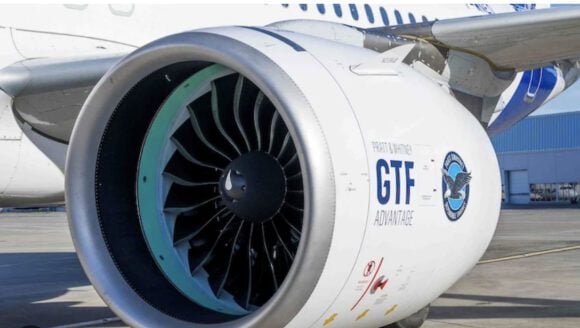Yesterday, the announcement of a new joint venture between Pratt & Whitney and Rolls Royce for narrow-body engines sent a shock wave through the industry. In the short-term, it recognizes the success of the Geared Turbofan concept, and it is a major endorsement for the Pure Power PW1000G-JM engine that Rolls Royce was initially skeptical about. If Airbus, Bombardier, Irkut and Mitsubishi weren’t enough, now Rolls Royce has endorsed, and invested in, the GTF concept.
While Rolls Royce has touted open-rotor concepts for the next generation of aircraft, that concept is also a geared engine, and the companies can utilize their respective technological strengths in designing the engine of the future. While open rotor concepts have strong promise in fuel economy, they have major challenges in size and redesign of aircraft, noise, and operate most efficiently at lower speeds.
The collaboration means that PW and RR will gain the best of both worlds from their respective R&D efforts, and the ability to capitalize on each others strengths. Clearly, PW has a winner in the GTF, which is the first of the new generation engines for narrow-bodies. But as we all know, engines don’t stand still, and PW has set an aggressive target for improving the engine by 1% per year over the next decade. Leveraging Rolls Royce strengths and R&D, along with PW’s own gearbox and research, should better enable them to achieve that goal.
Competitively, this will strengthen PW against its major competitor, CFM International, a joint venture of GE and Snecma, a unit of Safran Group. CFM’s competing LEAP engine uses a more conventional architecture, and while promising the same initial fuel burn advantage as the GTF, is expected to have a smaller potential for future improvements due to the limitation of its conventional architecture.
Additionally, Rolls Royce participation ensures that traditional Rolls Royce customers for wide-body aircraft can continue their customer support relationships and spares channels for PW via Rolls Royce, who as a JV partner can continue to provide support and problem solving for their existing customers.
For Rolls Royce, whose RB-282/285 series was not selected by airframe manufacturers, it ensures continued participation in the narrow-body marketplace, and participation in the hottest engine development of the last 2 decades – the geared architecture.
The success of the GTF, endorsement of Rolls Royce, and new Joint Venture clearly place PW back into the narrow-body game in a big way. Their 20 year R&D project on a geared turbofan has clearly paid off, and we expect the GTF to gain a leadership position on the A320neo.
Airlines like engine choices, and Boeing‘s exclusive arrangement with GE on the 737NG and Max may come back to haunt it in the future. Maintenance costs for the LEAP are likely to be significantly higher than those for the GTF (each manufacturer’s comparisons against today’s benchmarks indicate a 20% difference in favor of GTF) and with a stronger potential for future savings using the GTF technology through performance improvement programs, the GTF should have a significant economic advantage over leap in the 2020-2025 time frame.
The Bottom Line: For those who still doubted PW’s GTF concept, Rolls Royce endorsement of the concept – despite a controversial relationship, patent lawsuits, and recent difficulties between the companies – the new Joint Venture clearly indicated that the time of a geared turbofan has arrived. What remains to be seen is whether GE will need to adopt a geared architecture to remain competitive over the next decade as the GTF continues to evolve and improve.
Views: 30



